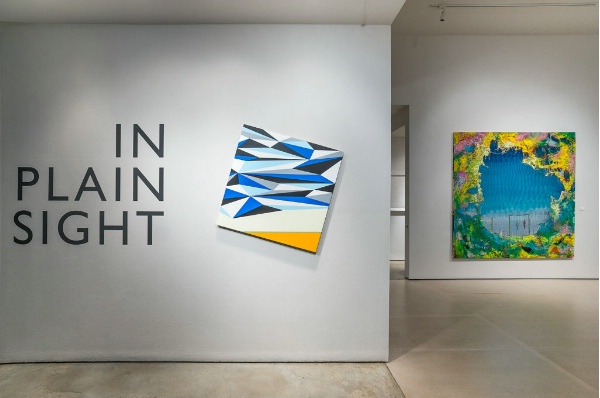
This is officially the season of painters’ painters. Three major exhibitions curated by Houston-based painters have opened in the last five months– “In Plain Sight” curated by Aaron Parazette at McClain Gallery, “Common Objects” curated by Shane Tolbert at David Shelton Gallery, and now “Artist’s Picks” curated by Howard Sherman at HAA. Abstract painting has long been an important part of the Houston art scene, but these three exhibitions give us a sense of a tight-knit community of artists, who want to play a significant role in presenting their own art.
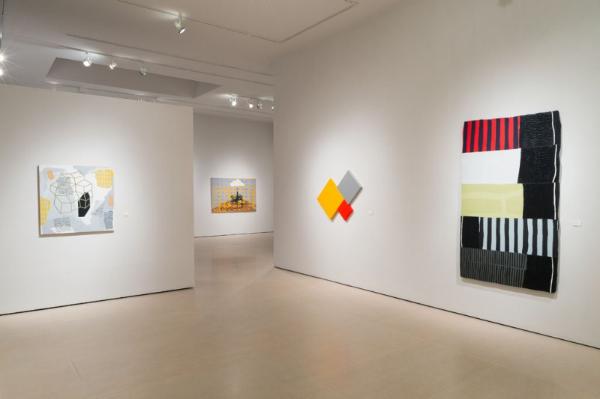
“In Plain Sight” showed that Houston painters share an interest in formal questions, but not in developing a unified aesthetic. All painters in the exhibition were looking for that perfect balance of harmony and dynamism in technique, color, and composition, but each artist had their own idiosyncratic solution. The placement of abstract paintings in the most prominent sight lines in the galleries reinforced an implicit assertion that painting should primarily be concerned with form and technique over concept and content– an idea that I will return to later.
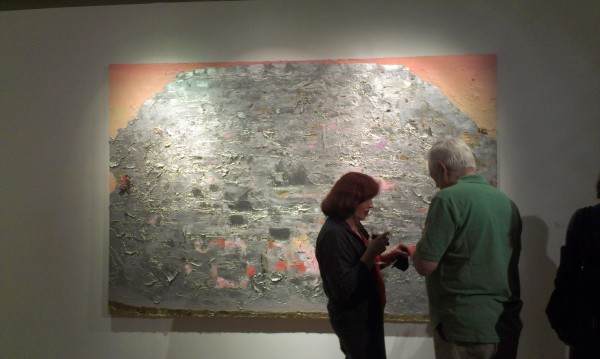
The group of seven painters at HAA are also interested in formal concerns, but more focused on ways that painting can grow out of a mixture of chance and control. Geoff Hippenstiel is the most spontaneous of the group with a field of silver and pinks built from layers of gestural swipes and mounds of daubs. The composition seems to be the result of intuitive movements and decisions.
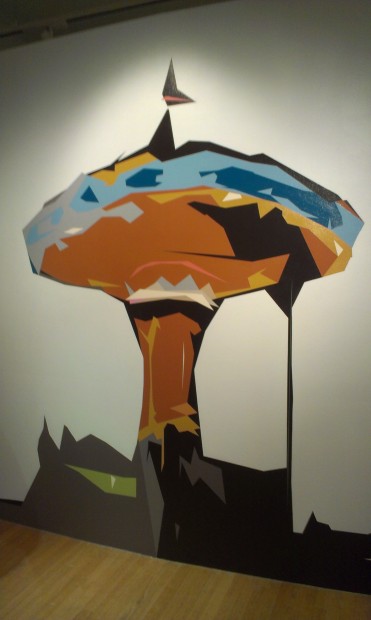
Michael Guidry’s mural, adjacent to Hippenstiel, could not be more different than its neighbor. Hard edged zones of color are tightly controlled and precisely composed. Chance in Guidry’s practice comes only in the process of developing the composition from a photograph through various manipulations to a final form, determined by digital distortions, that is recognizable only to the artist and completely open to the viewer’s interpretation.
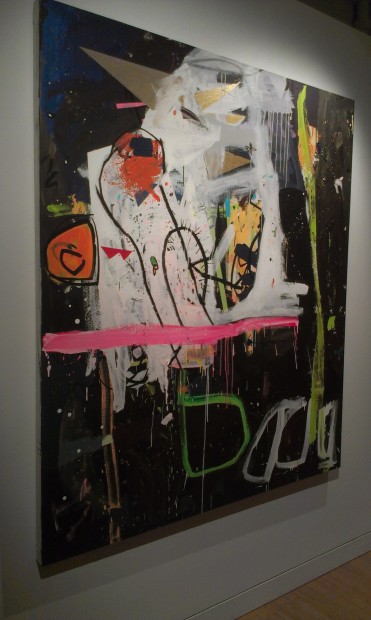
Sherman’s work ranges from explosions of gestural, seemingly automatic mark making to black outlines and hard edge slivers. His canvas struggles to contain the competing energies of various overlapping microcosms of cascading drips, contrasting neons, extreme tonal contrasts, and outlined “characters” that look like hands, faces, or bodies of some sort.
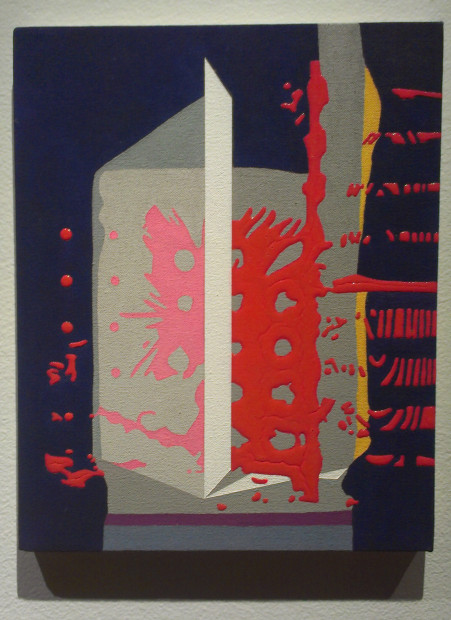
Robert Ruello speaks the language of painting with ease in saturated colors and compositions that unfold in layers. Every artwork is its own distinct world of impressively varied techniques used to reproduce images that Ruello has created by distorting and overlapping various digital images. Instinct and intent combine in a fluent expression.
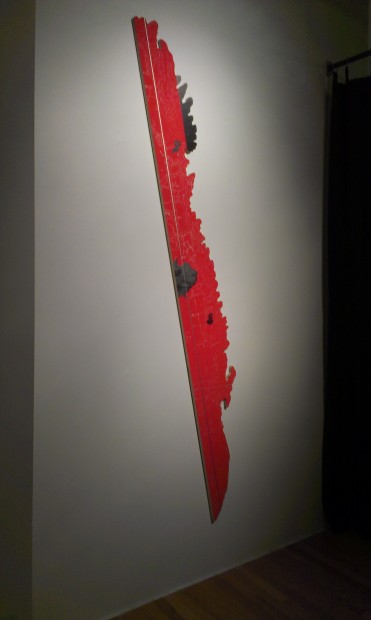
Tutor Mitroi’s shaped panels are detailed topographies of lines and edges that resemble roads, rivers, and national borders, although any specific reference is unclear. One has the sense when looking at the work that one is conducting research and surveillance of a foreign landscape, a feeling of power and danger that is reinforced by painting’s searing crimson.
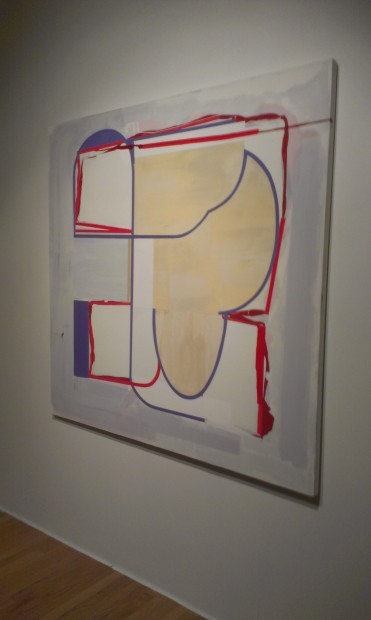
Marcelyn McNeil’s contribution to the exhibition at HAA is far more linear than the work she has shown over the last three years. The bright purple and red lines bring attention to the edges of McNeil’s forms, which are exciting places where one can see her multilayered process. The lines also define thick and smooth sections of white and cream that are beautiful and might otherwise pass unnoticed. One gets the sense that she trusts her process of mark making and has only come back later to outline and enhance what she has built up.
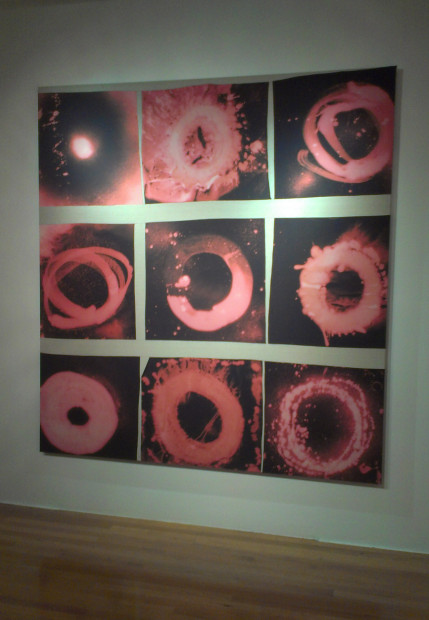
Shane Tolbert’s large, sectioned canvas is an intriguing outlier in the group as it is not painting, per se. What looks like a photographic process is achieved through a reductive process of removing dye from black cloth. The color and whiteness of the circles are determined by how long Tolbert allows a bleach-like substance to soak into the cloth. The resulting forms look like a series of astronomical photographs of sun storms, eclipses, rings, or nebula.
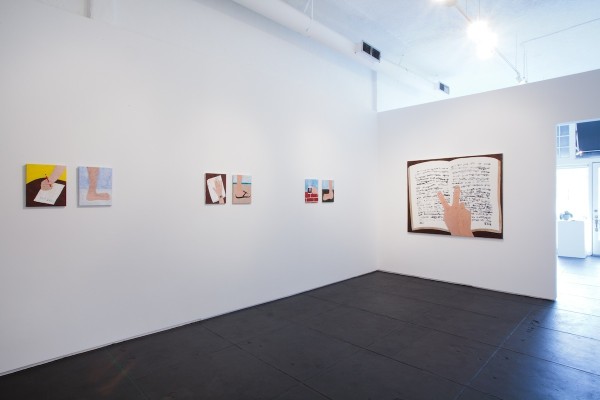
Tolbert has curated an concurrent exhibition at David Shelton of three gallery artists that also differs significantly from the others. By limiting the number of artists, Tolbert’s is the only one of the three exhibitions of painter’s painters to allow all included artists to show multiple or large scale works. We get a sense of the painters developing bodies of work and therefore more of the ideas that motivate them– such as studies of hands and feet in the case of Lane Hagood.
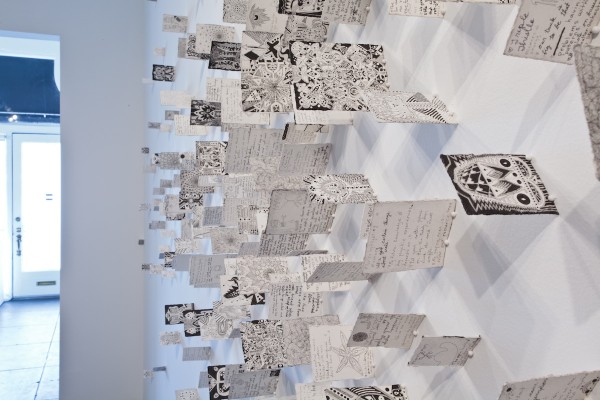
Or Nathan Hayden’s small paintings and notes that are small anecdotes on their own but add up to a swirling wall installation where viewers can move from painting to thoughts, drawing their own connections.
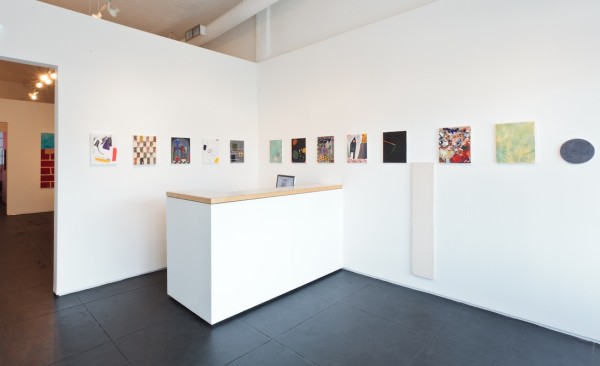
The variety of Ted Gahl’s compositions is also impressive, and makes his corner of the exhibition like a group show onto itself. It demolishes the idea of a singular style or vision and pulls the pieces into something really exciting. Why can’t an artwork have the liberty to be something unique, free from the tyranny of “the artist” as a cohesive, marketable being?
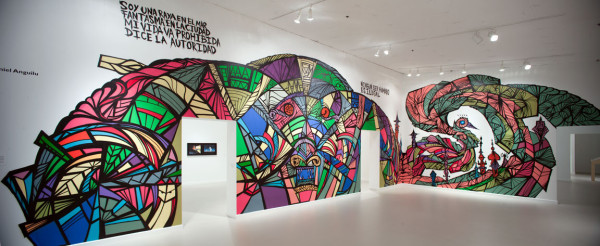
Which brings me back to the question of whether concept or content have a place in painting in Houston. There is an exhibition of Houston artists up at the Station Museum that includes types of painting that we are not seeing in these other exhibitions. Such as painting typically done on buildings and city streets, for example Daniel Anguilu’s murals.
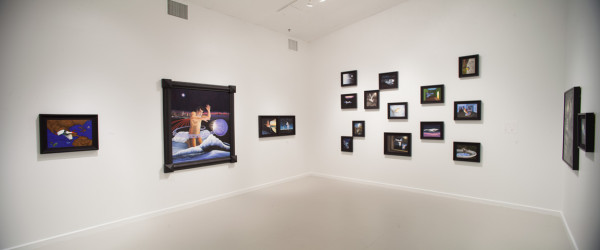
Or artwork that tells a story, such as Lynn Randolph’s figurative paintings about the passage from life to death. In the three exhibitions discussed above, painters are showing a type of painting that largely excludes narrative, cultural reference, or any sort of controversial concept. Not that artwork needs to include these things, but when painters curate their own exhibitions, why do they lean toward questions of formal choices or artistic practice over social engagement? And what does that say about how many painters see themselves and their community of painters? And how does the self-presentation of painters often differ from the presentation of painting in institutions with an educational mission? These are complex questions that will I will continue to ask as I go to painting exhibitions in Houston. Another opens at Wade Wilson Gallery this weekend.
Common Objects at David Shelton Gallery is on view until February 16.
HX8 at the Station Museum will be on view until February 17.
Howard sherman: Artist’s Picks will be on view at HAA’s Alliance Gallery until March 26.


